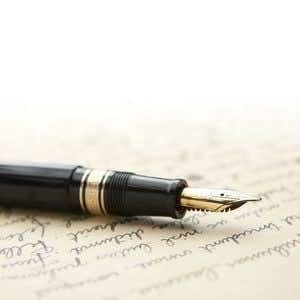Case – U.S. v. Crisp United States Court of Appeals, Fourth Circuit.March 31, 2003324 F.3d 261
Background: Defendant was convicted by jury in the United States District Court for the Middle District of North Carolina, of bank robbery, bank robbery with a dangerous weapon, and brandishing firearm during and in relation to bank robbery. During the trial, defendant pleaded not guilty. Government, to prove his fault beyond reasonable doubt, used forensic handwriting expert witness knowledgeable of writing and typography to match the handwritten note written by defendant to another cell inmate, where he admitted his involvement in alleged bank robbery and samples obtained during executing search warrant. Defendant, on his side, challenged the admissibility of testimony.
Expert Witness: The Government brought a handwriting examiner, Thomas Currin who had twenty-four years of experience at the North Carolina SBI. In addition, he had passed numerous proficiency tests, consistently receiving perfect scores. Currin testified to a consistent methodology of handwriting / forgery examination and identification, and he stated that the methodology “has been used not only at the level of state crime laboratories, but [also in] federal and international crime laboratories around the world.” When he was questioned regarding the standards employed in questioned document examination, Currin explained that every determination of authorship “is based on the uniqueness of [certain] similarities, and it’s based on the quality and the skill and the training of the document examiner.” Currin drew the jury’s attention to similarities between Crisp’s known handwriting exemplars, which were obtained under search warrant, and the writing on the Note. Among the similarities that he pointed out were the overall size and spacing of the letters and words in the documents; the unique shaping of the capital letter “L” in the name “Lamont”; the spacing between the capital letter “L” and the rest of the word; a peculiar shaping to the letters “o” and “n” when used in conjunction with one another; the v-like formation of the letter “u” in the word “you”; and the shape of the letter “t,” including the horizontal stroke. Currin also noted that the word “tomorrow” was misspelled in the same manner on both the known exemplar and the Note. He went on to testify that, in his opinion, Crisp had authored the Note.
Daubert Challenge: Defendant challenged the admissibility of the opinions of Currin on grounds that are essentially identical to those on which he relied to make his case against fingerprint evidence. Crisp contends that, like fingerprinting identifications, the basic premise behind handwriting analysis is that no two persons write alike, and thus that forensic document examiners can reliably determine authorship of a particular document by comparing it with known samples. He maintains that these basic premises have not been tested, nor has an error rate been established. In addition, he asserts that handwriting experts have no numerical standards to govern their analyses and that they have not subjected themselves and their science to critical self-examination and study.
Court analysis: The Court disagreed with Defendant and ruled that handwriting expert testimony was admissible. Fingerprint and handwriting analysis have long been recognized by the courts as sound methods for making reliable identifications. The fact that handwriting comparison analysis has achieved widespread and lasting acceptance in the expert community, it provides the assurance of reliability that Daubert requires. Furthermore, as with expert testimony on fingerprints, the role of the handwriting expert is primarily to draw the jury’s attention to similarities between a known exemplar and a contested sample. Here, Currin merely pointed out certain unique characteristics shared by the two writings. Though he opined that Crisp authored the Note in question, the jury was nonetheless left to examine the Note and decide for itself whether it agreed with the expert. Since Defendant did not provide any legitimate reason to doubt the reliability of handwriting analysis, the court admitted the expert testimony as reliable evidence.
About the author
Albina Gasanbekova
Albina Gasanbekova is an Associate at Mitchell Silberberg & Knupp LLP, specializing in international disputes and litigation. She has been with the firm since August 2016. Additionally, Albina serves as the Executive Editor for ITA in Review at the Institute for Transnational Arbitration. Her prior roles include working as a Legal Consultant at The World Bank and interning at the Office of the New York State Attorney General and the Supreme Commercial Court of Russia. She holds an LL.M. in International Law and International Arbitration from Georgetown University Law Center and a Law Degree in Civil Law from the Russian Academy of Justice. Albina's career is marked by a focus on international legal matters.



